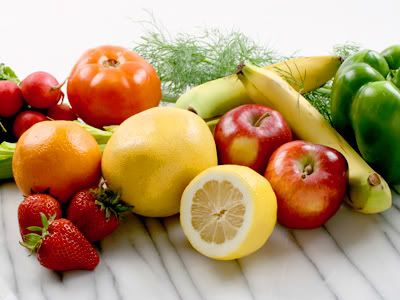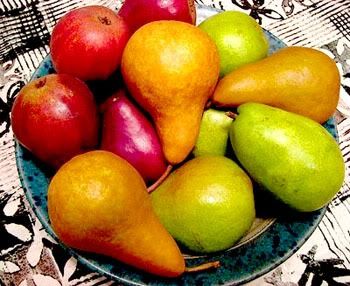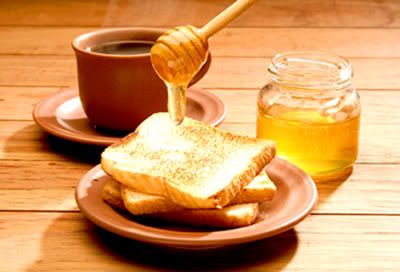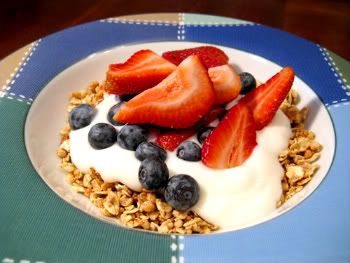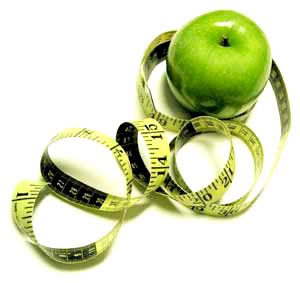
The Power of "Acai Berry Diet”
Hi There!! Today I would like to introduce you to know for superfood called “Acai Berry” that I had read from some resources. For several hundreds years, the acai (pronounced “ah-sigh-ee”) berry was known only to those who live inside the Amazon rainforest. Researchers think that compounds in plants and trees in the rainforests may have the solutions to treat our most dreaded diseases. When the rainforests vanish, those remedies naturally vanish.
Fortunately, people in the rainforests found the miracles in acai berry long time ago and have been using the acai berry to maintain good health and increase the energy for many years.
The acai berries are grown and found on top of palm trees. Local farmers at the rainforest harvest acai berry and create fruit pulp out of it. If they freeze acai berry promptly when they are still fresh, most of nutrition in acai berry can be kept in the pulp even while being transported overseas. The acai berry is best-known for their rich purplish color and an ample source of numerous crucial antioxidant vitamins.
Acai Berry Benefits are “The Reason why you should put Acai Berry into your Daily Diet Plan”.
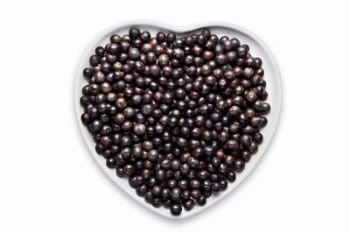
Acai Berry is the fruit, a small, round, black-purple drupe about 1 inch (25 mm) in diameter, similar in appearance and size to a grape but with less pulp, is produced in branched panicles of 700 to 900 fruits. Two crops of fruit are produced each year. The fruit has a single large seed about 0.25–0.40 inches (7–10 mm) in diameter. The exocarp of the ripe fruits is a deep purple color, or green, depending on the kind of acai and its maturity. The mesocarp is pulpy and thin, with a consistent thickness of 1 mm or less. It surrounds the voluminous and hard endocarp, which contains a seed with a diminutive embryo and abundant endosperm. The seed makes up about 80% of the fruit.
The berries are harvested as food. In a study of three traditional Caboclo populations in the Amazon region of Brazil, acai palm was described as the most important plant species because the fruit makes up such a major component of diet (up to 42% of the total food intake by weight) and is economically valuable in the region.
The juice and pulp of acai fruits are used in various juice blends, smoothies, sodas, and other beverages. In northern Brazil, acai is traditionally served in gourds called "cuias" with tapioca and, depending on the local preference, can be consumed either salty or sweet (sugar, rapadura, and honey are known to be used in the mix). Acai has become popular in southern Brazil where it is consumed cold as acai na tigela ("acai in the bowl"), mostly mixed with granola. Acai is also widely consumed in Brazil as an ice cream flavor or juice. The juice has also been used in a flavored liqueur.
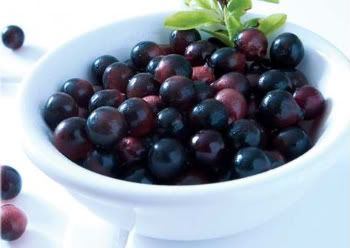
Dietary Supplement
The acai "berry" has been touted and marketed as a highly beneficial dietary supplement. Companies sell acai berry products in the form of tablets, juice, smoothies, instant drink powders, and whole fruit.
Marketers of these products make claims that acai provides increased energy levels, improved sexual performance, improved digestion, detoxification, high fiber content, high antioxidant content, improved skin appearance, improved heart health, improved sleep, and reduction of cholesterol levels. More dubious claims include reversal of diabetes and other chronic illnesses, as well as expanding size of the penis and increasing men's sexual virility and sexual attractiveness to women. Acai is most commonly marketed as a weight loss product.
As of March 2009, there are no controlled studies backing up any of these claims. According to ABC News correspondent Susan Donaldson, these products have not been evaluated (in the United States) by the FDA, and their efficacy is questionable. In late 2008, lawyers for The Oprah Winfrey Show began investigating alleged statements from supplement manufacturers who suggested that frequent Oprah guest Dr. Mehmet Oz had recommended their product or acai in general for weight loss.
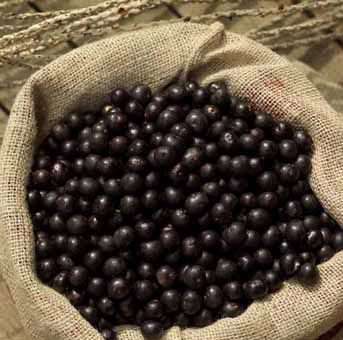
Nutritional content
Most of the research to date on acai has focused on a particular freeze-dried form referred to as Opti-acai. This powder preparation of freeze-dried acai fruit pulp and skin was reported to contain (per 100 g of extract) 533.9 calories, 52.2 g carbohydrates, 8.1 g protein, and 32.5 g total fat. The carbohydrate portion included 44.2 g of fiber. The powder was also shown to contain (per 100 g): negligible vitamin C, 260 mg calcium, 4.4 mg iron, and 1002 U vitamin A, as well as aspartic acid and glutamic acid; the amino acid content was 7.59% of total dry weight.
The fat content of acai consists of oleic acid (56.2% of total fats), palmitic acid (24.1%), and linoleic acid (12.5%). Acai also contains beta-sitosterol (78–91% of total sterols). The oil compartments in acai fruit contain polyphenols such as procyanidin oligmers and vanillic acid, syringic acid, p-hydroxybenzoic acid, protocatechuic acid, and ferulic acid, which were shown to degrade substantially during storage or exposure to heat.
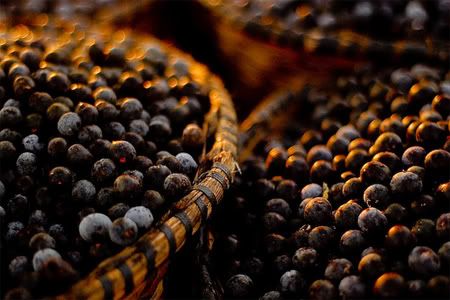
Antioxidants of acai raw materials
A comparative analysis reported that acai has intermediate antioxidant potency among 11 varieties of frozen juice pulps, scoring lower than acerola, mango, strawberry, and grapes. A powdered preparation of freeze-dried acai fruit pulp and skin was shown to contain anthocyanins (3.19 mg/g); however, anthocyanins accounted for only about 10% of the overall antioxidant capacity. The powdered preparation was also reported to contain twelve flavonoid-like compounds, including homoorientin, orientin, taxifolin, deoxyhexose, isovitexin, scoparin, as well as proanthocyanidins (12.89 mg/g), and low levels of resveratrol (1.1 μg/g).
In a study of different acai varieties for their antioxidant capacity, a white species displayed no antioxidant activity against different oxygen radicals, whereas the purple variety most often used commercially was excellent against peroxyl radicals, good against peroxynitrite, and poor against hydroxyl radicals.
Freeze-dried acai powder was found to have high antioxidant activity against superoxide (1614 units/g) and peroxyl radicals (1027 μmol TE/g) and milder activity for peroxynitrite and hydroxyl radicals. The powder was reported to inhibit hydrogen peroxide-induced oxidation in neutrophils, and to have a slight stimulatory effect on nitric oxide production by lipopolysaccharide-stimulated macrophages in vitro.
Extracts of acai seeds were reported to have antioxidant capacity against peroxyl radicals, similar to the antioxidant capacity of the pulp, with higher antioxidant capacity against peroxynitrite and hydroxyl radicals.
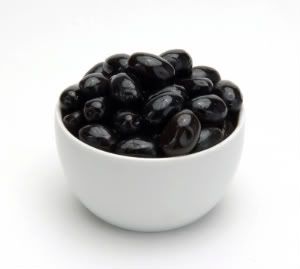
Antioxidant activity of Acai juice
When three commercially available juice mixes containing unspecified percentages of acai juice were compared for in vitro antioxidant capacity against red wine, tea, six types of pure fruit juice, and pomegranate juice. The average antioxidant capacity was ranked lower than that of pomegranate juice, Concord grape juice, blueberry juice, and red wine. The average was roughly equivalent to that of black cherry or cranberry juice, and was higher than that of orange juice, apple juice, and tea.
Studies have demonstrated that blood antioxidant capacity increases within two hours of consuming a commercial acai juice.
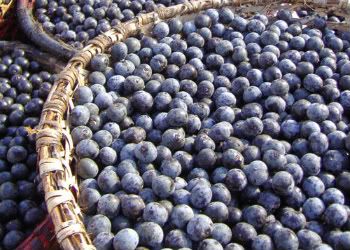
Another study showed another benefit of acai berry. The study has shown the acai berry’s activity against cancer cells due to high level of antioxidant and nutritional components in pulp and juice. Grapes and blueberries are also known as healthy fruits. Actually, the acai berry has much more antioxidant vitamins than grapes (ten times more) and blueberries (two times more).
Marketers of these products make claims that acai provides increased energy levels, improved sexual performance, improved digestion, detoxification, high fiber content, high antioxidant content, improved skin appearance, improved heart health, improved sleep, and reduction of cholesterol levels. More dubious claims include reversal of diabetes and other chronic illnesses, as well as expanding size of the penis and increasing men's sexual virility and sexual attractiveness to women. Acai is most commonly marketed as a weight loss product.
As of March 2009, there are no controlled studies backing up any of these claims. According to ABC News correspondent Susan Donaldson, these products have not been evaluated (in the United States) by the FDA, and their efficacy is questionable. In late 2008, lawyers for The Oprah Winfrey Show began investigating alleged statements from supplement manufacturers who suggested that frequent Oprah guest Dr. Mehmet Oz had recommended their product or acai in general for weight loss.

Nutritional content
Most of the research to date on acai has focused on a particular freeze-dried form referred to as Opti-acai. This powder preparation of freeze-dried acai fruit pulp and skin was reported to contain (per 100 g of extract) 533.9 calories, 52.2 g carbohydrates, 8.1 g protein, and 32.5 g total fat. The carbohydrate portion included 44.2 g of fiber. The powder was also shown to contain (per 100 g): negligible vitamin C, 260 mg calcium, 4.4 mg iron, and 1002 U vitamin A, as well as aspartic acid and glutamic acid; the amino acid content was 7.59% of total dry weight.
The fat content of acai consists of oleic acid (56.2% of total fats), palmitic acid (24.1%), and linoleic acid (12.5%). Acai also contains beta-sitosterol (78–91% of total sterols). The oil compartments in acai fruit contain polyphenols such as procyanidin oligmers and vanillic acid, syringic acid, p-hydroxybenzoic acid, protocatechuic acid, and ferulic acid, which were shown to degrade substantially during storage or exposure to heat.

Antioxidants of acai raw materials
A comparative analysis reported that acai has intermediate antioxidant potency among 11 varieties of frozen juice pulps, scoring lower than acerola, mango, strawberry, and grapes. A powdered preparation of freeze-dried acai fruit pulp and skin was shown to contain anthocyanins (3.19 mg/g); however, anthocyanins accounted for only about 10% of the overall antioxidant capacity. The powdered preparation was also reported to contain twelve flavonoid-like compounds, including homoorientin, orientin, taxifolin, deoxyhexose, isovitexin, scoparin, as well as proanthocyanidins (12.89 mg/g), and low levels of resveratrol (1.1 μg/g).
In a study of different acai varieties for their antioxidant capacity, a white species displayed no antioxidant activity against different oxygen radicals, whereas the purple variety most often used commercially was excellent against peroxyl radicals, good against peroxynitrite, and poor against hydroxyl radicals.
Freeze-dried acai powder was found to have high antioxidant activity against superoxide (1614 units/g) and peroxyl radicals (1027 μmol TE/g) and milder activity for peroxynitrite and hydroxyl radicals. The powder was reported to inhibit hydrogen peroxide-induced oxidation in neutrophils, and to have a slight stimulatory effect on nitric oxide production by lipopolysaccharide-stimulated macrophages in vitro.
Extracts of acai seeds were reported to have antioxidant capacity against peroxyl radicals, similar to the antioxidant capacity of the pulp, with higher antioxidant capacity against peroxynitrite and hydroxyl radicals.

Antioxidant activity of Acai juice
When three commercially available juice mixes containing unspecified percentages of acai juice were compared for in vitro antioxidant capacity against red wine, tea, six types of pure fruit juice, and pomegranate juice. The average antioxidant capacity was ranked lower than that of pomegranate juice, Concord grape juice, blueberry juice, and red wine. The average was roughly equivalent to that of black cherry or cranberry juice, and was higher than that of orange juice, apple juice, and tea.
Studies have demonstrated that blood antioxidant capacity increases within two hours of consuming a commercial acai juice.

Another study showed another benefit of acai berry. The study has shown the acai berry’s activity against cancer cells due to high level of antioxidant and nutritional components in pulp and juice. Grapes and blueberries are also known as healthy fruits. Actually, the acai berry has much more antioxidant vitamins than grapes (ten times more) and blueberries (two times more).
For a long time, the acai berry has not been available to people outside the rainforests. As the acai berry became more popular, acai berry started to be more available to us. The acai berry is really one of the most remedial fruit, and a desirable add-on to your daily diet.
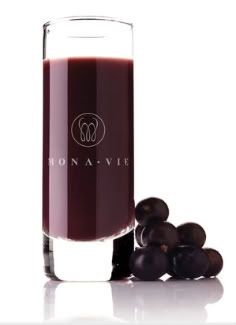
Have you put "Acai Berry" into your daily diet plan yet? lol.
Any queries that I could help you, please feel free to reach me at stargirlyune@gmail.com, see you!!!
Sources&Pictures: Acai Berry, Wikipedia, the free encyclopedia/ listofhealthyfoods.com/google.com
